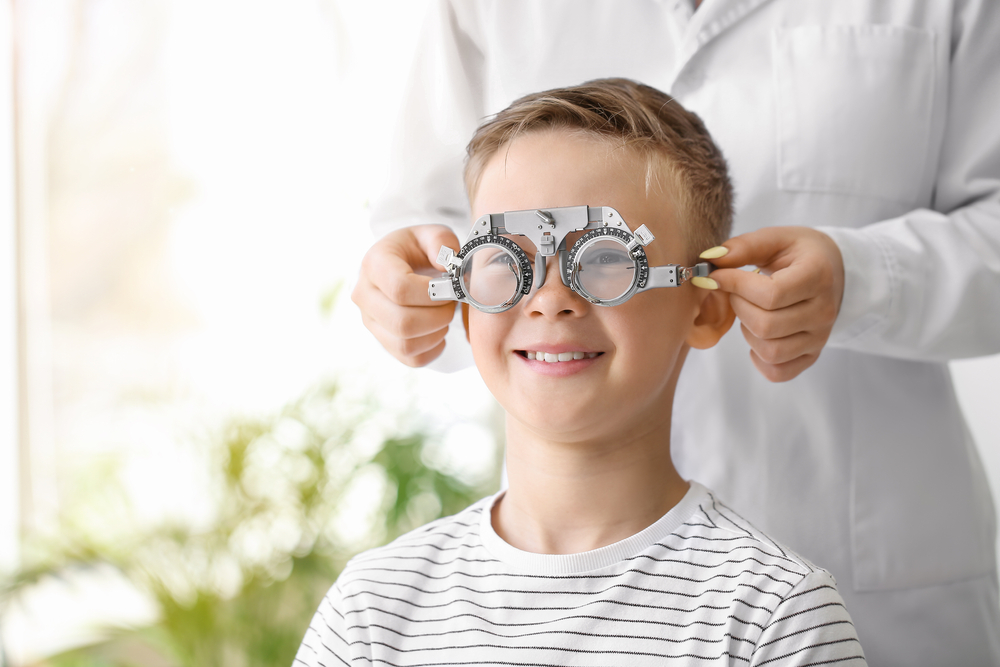
Does your little one have trouble seeing distant objects clearly? Do they find it hard to read the board at school or watch TV? If so, they likely have myopia, also known as nearsightedness.
Myopia is a prevalent vision problem that children and adults experience. It can make daily tasks more challenging and raise the chance of developing certain eye illnesses later in life. But there is no cause to be overly alarmed; there are techniques to halt or delay the onset of childhood myopia.
What Is Myopia, and What Causes It?
Myopia is a condition where your eyes can see close objects clearly but not distant ones. It occurs when your cornea, or the transparent front surface of your eye, is overly curved or your eyeball is too lengthy. As a result, light entering your eye now focuses in front of it rather than straight on your retina. It has the effect of making distant objects hazy and out of focus.
Myopia has an unknown specific etiology, but it likely stems from hereditary and environmental factors. The following variables could make your child more likely to become myopic:
Having parents or siblings with myopia
Spending too much time indoors or in dim light
Carrying out a great deal of close work, such as reading, writing, or using digital gadgets
Not getting enough outdoor activity or exposure to natural sunlight
How Can You Control Myopia in Children?
You can use a few tricks to keep your child’s nearsightedness at bay. Here are some potentially helpful tips:
Regular Pediatric Eye Exams
The best way to detect and treat myopia early is to have your child's eyes checked by a pediatric eye doctor at least once a year. The eye doctor can prescribe glasses or contact lenses to correct your child's vision and monitor any changes in their eye health.
Limit Screen Time
Too much screen time can strain your child's eyes and affect their vision development. Limit your child's daily screen time to no more than two hours. Also, ensure your child takes breaks every 20 minutes and looks at something approximately 20 feet away for roughly 20 seconds. This can help relax their eye muscles and prevent eye fatigue.
Encourage Outdoor Activity
Spending time outdoors can benefit your child's eyes in many ways. It can provide natural sunlight, which stimulates the production of dopamine. This chemical helps regulate eye growth and prevents myopia. It can also improve your child's overall health and well-being. Set your youngster's daily goal of at least two hours of outdoor play.
Consider Other Options
Sometimes, your eye doctor may recommend other options to control myopia in children. These include orthokeratology, multifocal lenses, or low-dose atropine eye drops. These options may slow the progression of myopia by altering the retina's ability to concentrate light.
Conclusion
Many children and adults have myopia, a common and curable eye ailment. These recommendations can aid in preventing or slowing your child's myopia and give them a clearer and healthier vision for life.
For more information on myopia control in children, visit Refined Eyecare Optometry at our office in Torrance, California. Call (310) 214-0409 to book an appointment today.







